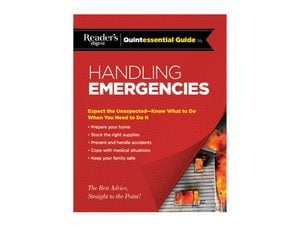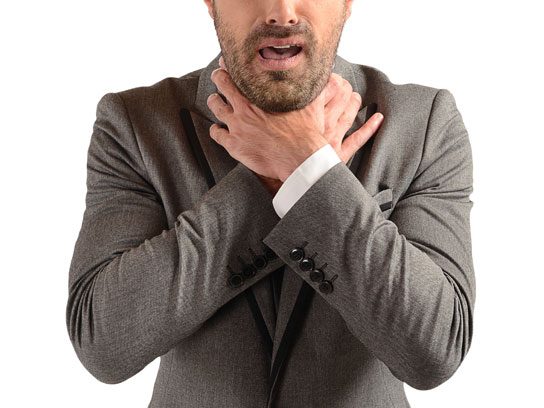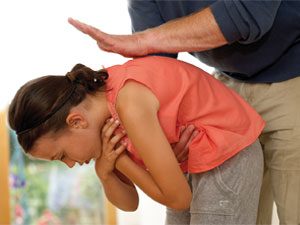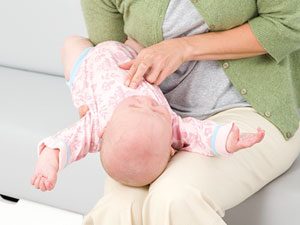First Aid for Choking: Key Steps You Should Memorize to Save Someone’s Life
Updated: Apr. 15, 2016
Knowing how to take action when someone is choking can save their life. Here, a step by step guide everyone should know.
If a small object “goes down the wrong way,” it can block the airway and cause muscle spasm. Young children are also apt to put small objects in their mouth. This can be life-threatening as the air passages that lead to the lungs become partially or totally blocked. Elderly people who are sick need special attention at mealtimes. Make sure that they are seated, give them small spoonfuls of food, and check that their mouth is completely clear when the meal is finished.
[pullquote]Don’t sweep a finger around the mouth to look for an object, as you may push it farther down the throat.[/pullquote]
If the patient can still cough, do not intervene, as there is a risk the obstruction could get into the lungs. There may be another cause for the cough so ask if the patient if choking is the reason. Look out for the following symptoms of breathing difficulty:
- Patient suddenly starts coughing, gasping for breath, and has difficulty talking.
- Skin becomes gray-blue (known as cyanosis). This is especially noticeable at the ears, lips, inside the mouth, and fingertips.
- Adult and child (age 1 and up): If the airway is partially blocked, the patient will be able to speak, cough, and breathe. If the airway is completely blocked, the patient will not be able to talk, cough, or breathe.
- Baby (0-12 months): If the airway is partially blocked, the baby can cough but will find it difficult to cry or even to make a noise. If the airway is completely blocked, the baby will not make a sound and will stop breathing.
What to Do if an Adult/Child Is Choking
1. Clear a partially obstructed airway. Tell her to cough, which will help clear the obstruction on its own.
2. Give back blows. If the airway is completely blocked, help her to bend forward and support her upper body (see picture below). Give five sharp back blows between the shoulder blades with the heel of your hand, then check her mouth.
3. Give abdominal thrusts. If she is still choking, place your arms around her body, with one fist against the abdomen. Grasp the fist with your other hand and pull inward and upward up to five times (see picture below). Check her mouth again.
4. Check the person’s mouth after every set of back slaps and abdominal thrusts or chest thrusts. Pick out anything obvious. Don’t sweep a finger around the mouth to look for an object, as you may push it farther down the throat or damage the tissues.
5. Get emergency help. If necessary, repeat steps 2 and 3 up to three times. If the obstruction has not been cleared, call emergency services. Continue with the back blows and abdominal thrusts until help arrives or the patient loses consciousness. Note: Anyone who has been given abdominal thrusts or chest thrusts must be seen by a doctor.
What to Do if a Baby Is Choking
1. Give back blows. If a baby cannot breathe, lay her facedown along your forearm, supporting her head (see picture below). Using the heel of one hand, give her five sharp blows between her shoulder blades.
2. Check mouth. Turn the baby over onto your other arm. Cradle her head in your hand and keep it as low as possible (see picture below). Look inside her mouth. If the mouth is not clear, go to step 3.
3. Give chest thrusts. Keeping baby along your forearm, support your arm along or across your thigh. Place two fingers a finger’s breadth below the nipple line and press sharply inward and upward up to five times (see picture below).
4. Get emergency help. Repeat steps 1 to 3 up to three times. If the mouth still is not clear, take the baby with you and call emergency services. Continue back blows and chest thrusts until help arrives. If the baby loses consciousness, prepare to give CPR.
 Get more information about handling health emergencies and natural disasters in the new book Reader’s Digest Quintessential Guide to Handling Emergencies. You’ll get must-know tips and tactics for preparing your home, stocking the right supplies, preventing and handling accidents, coping with medical situations, and keeping your family safe. Learn more and buy the book here.
Get more information about handling health emergencies and natural disasters in the new book Reader’s Digest Quintessential Guide to Handling Emergencies. You’ll get must-know tips and tactics for preparing your home, stocking the right supplies, preventing and handling accidents, coping with medical situations, and keeping your family safe. Learn more and buy the book here.





